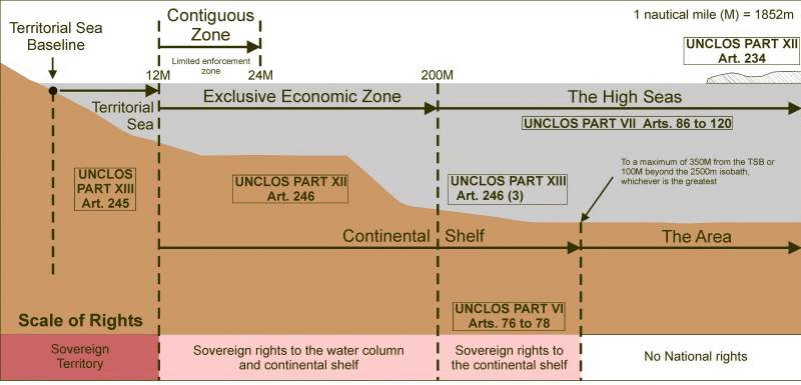NOC and UNCLOS
The United Nations Convention on the Law of the Sea (UNCLOS) conveys sovereign rights to coastal states over the seabed and subsoil of their continental shelf. Article 76 of UNCLOS provides formulae that allow coastal states to establish a continental shelf beyond the 200 M EEZ where the necessary criteria are met, and allows the state to explore and exploit the natural resources of the seabed and subsoil of this extended shelf.
The Marine Geoscience Group (UNCLOS) at the NOC led and provided technical advice to the UK Government for all four UK claims under Article 76; in respect of the Celtic Shelf, Hatton-Rockall area, Ascension Island, and the Falkland Islands and South Georgia and the South Sandwich Islands.
The Marine Geoscience Group (UNCLOS) assisted Barbados, Vietnam, and Yemen in submitting extended continental shelf submissions to the CLCS via commissioned research contracts and has generated considerable goodwill for the UK through capacity building.
Over 100 nationals from 40 countries have undertaken training courses at NOC / University of Southampton in UNCLOS application and international maritime law underlining the UK lead is this field.
The NOC continues to provide advice to the UK Government on delimitation of continental shelf areas beyond 200 nautical miles, as well as retaining a watching brief of current activity within the UNCLOS community.
In addition the NOC provides advice relating to Part XIII of UNCLOS, namely Marine Scientific Research. The undertaking of Government funded marine scientific research in a Coastal States declared maritime zones are regulated under Part XIII of the UNCLOS.
Diplomatic clearances for research expeditions managed by the NOC are also processed with an input of UNCLOS relevant information, such as maritime space, environmentally sensitive areas and knowledge of current areas of dispute.
The illustration below shows the relevant coastal state maritime zones and the associated Articles form Part VI, Part XII and Part XIII of UNCLOS that provide details of the modus operandi for MSR in these zones.

